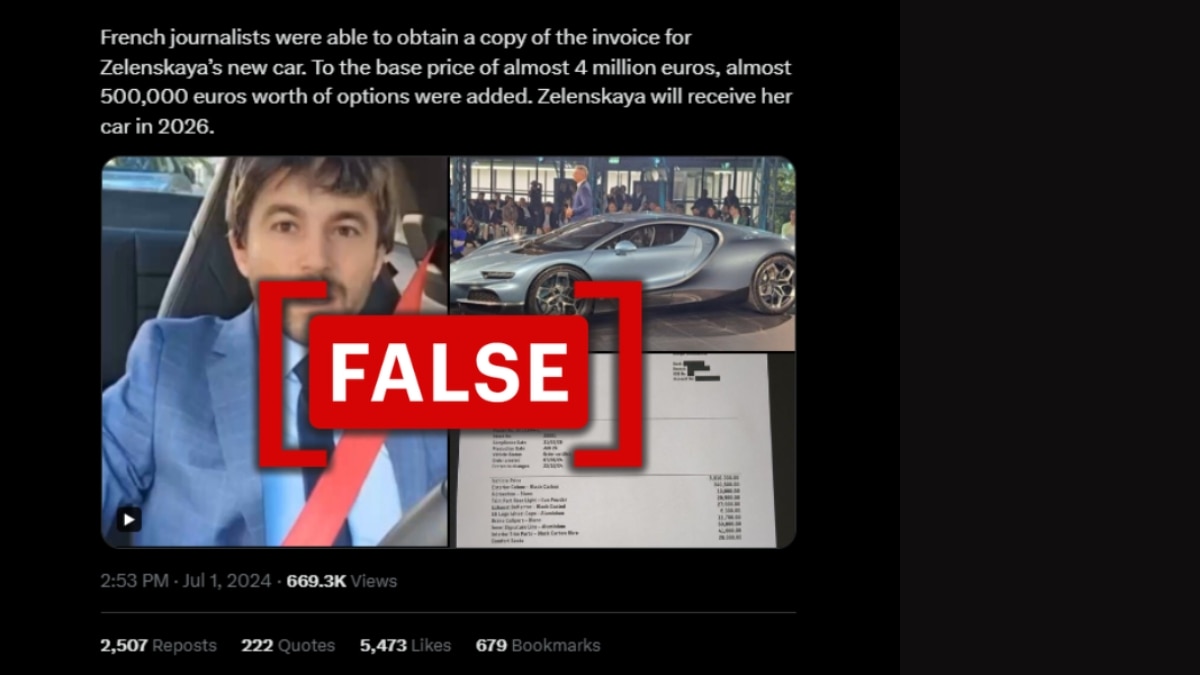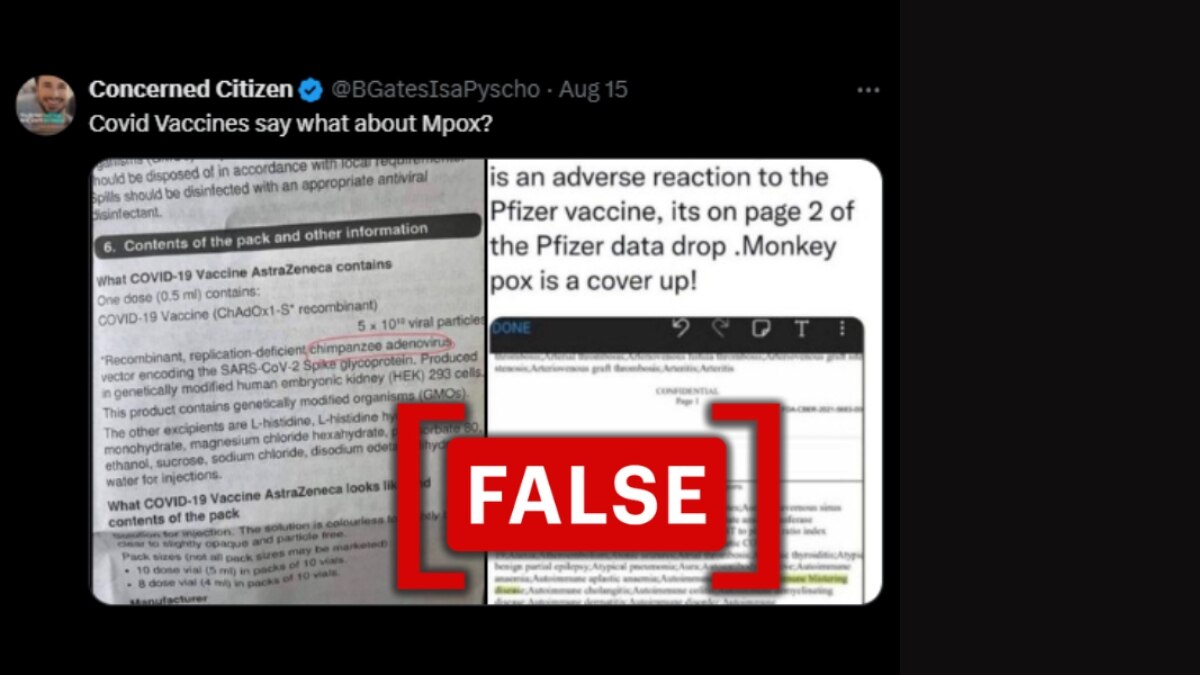Elections To Vaccines, Policy To Climate: Looking Back At 2024 Misinformation Landscape
Among 2024’s historic number of elections, a common theme emerged: while politicians rallied for votes, fact-checkers redoubled efforts to debunk falsehoods on multiple fronts.
From climate misinformation during natural disasters to fabricated scandals targeting migrant communities, the scope and scale of misinformation in 2024 was alarmingly broad. According to Eurobarometer, the EU’s polling tool for tracking public opinion, a survey conducted in the spring of this year found that 71 percent of Europeans reported frequently encountering disinformation, and 86 percent agreed that its rapid spread poses a major threat to democracy.
Logically Facts dissects the misinformation narratives and disinformation campaigns that shaped 2024, delving into their methods, targets, and lasting implications for the digital landscape.
The Year Of Elections
Some 74 nations and bodies, equating to nearly 20 percent of the world’s population, went to the polls in this year’s global election super-cycle. More than 52 percent of elections were held in countries experiencing declining levels of democracy, while only five percent took place amid democratization. A report by the V-Dem Institute, an independent research organization that measures democracy worldwide, revealed that by 2023, 71 percent of the global population—5.7 billion people—were living under electoral or closed autocracies. This figure is a sharp rise from 48 percent a decade earlier, underscoring the ongoing wave of autocratization, where democratic institutions are systematically eroded.
The Global Risk Report by the World Economic Forum (WEF) ranked disinformation as the second most significant risk of the year, as recent technological advances have enhanced the volume, reach, and efficacy of falsified information. Nowhere was this challenge more critical than in elections, where voters had to navigate a minefield of falsehoods before reaching the polling stations.
Misinformation targeted every aspect of the electoral process, from voter registration to ballot counting. False claims about election dates, locations, and methods created uncertainty in vulnerable communities, while fabricated quotes, endorsements, and scandals fueled widespread confusion.
In India, political and communal falsehoods created uncertainty around voter registration, while in Ireland, viral posts falsely claimed that voting rights were granted to asylum-seekers and refugees to replace the Irish population. The U.S. elections were swarmed with claims around voting machine malfunction, as users often claimed the machines were “rigged” to deliberately switch votes or block users from selecting specific candidates. In Venezuela, a video of stolen air conditioners was falsely presented as a video of ballot box theft.
Targeted campaigns and deceptive content also promoted narratives that exacerbated cultural, ideological, and ethnic tensions. Notable examples include false claims during the U.S. elections alleging that Haitians in Springfield were eating pets, as well as disinformation aimed at influencing Kurdish voters in Türkiye. Malicious accounts specifically targeting Muslim populations were also prominent, with examples from India and the U.K.
Foreign influence operations further besmirched the information landscape as Russia, China, and Iran employed cyberattacks, propaganda, and coordinated networks to sway outcomes for geopolitical gain. In the case of European Union elections, Russia’s amplified narratives questioning EU legitimacy used the impersonation media sites of the Doppelganger campaign to destabilize democracy and weaken Western support for Ukraine.
Weaponizing Policy and Conflict
Misinformation surrounding elections did not stop at the ballot box, extending into debates on polarizing or high-stakes policies and geopolitical conflicts such as the Russian invasion of Ukraine, the Israel-Hamas war, and Israel-Hezbollah tensions. Logically Facts identified seven key misinformation themes surrounding the first year of the Israel-Gaza conflict, including claims about international support, operational events, and the human toll of the war, alongside narratives of discrediting, civil unrest, and political relations.
Regarding Russia’s invasion of Ukraine, claims distributed by Kremlin-aligned sources and amplified by local skeptics targeted political leaders such as Ukraine’s President Volodymyr Zelenskyy. Just this year, he and his family were falsely accused of posing with bundles of cash, buying Sting’s wine estate in Italy, a casino resort in Cyprus, and a Bugatti, all financed by “taxpayers’ money.” These efforts often reflected a coordinated strategy aligned with Kremlin propaganda to manipulate public perception and discredit adversaries.

Foreign aid and international alliances also became contentious debate points among political candidates. For instance, U.S. President-elect Donald Trump expressed criticism of aid the Biden administration provided Ukraine, calling Zelenskyy “the greatest salesman of any politician that’s ever lived.” For a more nuanced understanding, read Logically Facts’ analysis about who really benefits from monetary aid for Ukraine. Meanwhile, in South Asia, X accounts capitalized on political instability in Bangladesh to falsely stoke up conflict with neighboring India.
Misinformation also extended to fabricated battle reports, troop movements, and allegations of staged atrocities. Video game footage was often repurposed as “evidence,” for example, to falsely claim that Ukrainian planes attacked the Crimean Bridge on August 7, 2024, although no such attack was reported. A similar tactic was also used in the context of Israel–Hamas.
Misattributed conflict footage was also rife, with old videos from Ukraine passed off as Hezbollah’s attack on Israel, old photos of Gaza shared as Israel attacking civilian homes in Lebanon, and old videos from Syria shared as Israel’s attack on Palestine. Methods such as fabricated news or authority statements, as well as non-visual textual claims, were also prevalent.
Immigration Myths
The rise of the far-right movement during this election cycle was accompanied by a surge in misinformation surrounding refugee and migrant issues. Rhetoric framing immigration as a threat to cultural identity grew in volume, with online actors invoking “the great replacement theory“—a conspiracy alleging elites are replacing native populations with non-white immigrants to erode cultural and political systems. These accusations covered a wide range of alleged participants, including the United Nations, and misinterpreted the statistics around Muslim populations in London, Amsterdam, and Sweden, among others, as alleged proof.
These widely disseminated narratives fueled fear and resistance online to immigration policies, humanitarian aid, and community funding. In the U.K., backlash emerged against initiatives aimed at protecting mosques, Muslim schools, and cultural centers, with far-right groups using such funding as evidence of supposed favoritism and societal erosion. Misinformation also manipulated data on asylum and refugee programs to allege corruption, inequality, or unsustainable resource strain. This was especially prominent in the U.K., where false claims distorted facts about immigrants and their benefits in terms of housing, public transport, healthcare, and income, portraying them as disproportionately privileged compared to native citizens.
Claims about public safety were often exaggerated, with crime statistics misrepresented to depict refugees as a threat. For instance, inaccurate claims that foreign nationals perpetrate the majority of rapes in France were circulated on both social media and traditional media sources, despite not reflecting official statistics.
Following the stabbing in Southport, England, in July, which left three children dead, a wave of misinformation swept across social media, fueling nationwide protests. Posts falsely identified the attacker as an illegal immigrant, often accompanied by misattributed photos. The false narratives persisted even after authorities confirmed the perpetrator was a British citizen. Some tied the incident to allegations of two-tier policing, showcasing it as evidence of racial bias, while others promoted conspiracy theories that it was a false flag event to push digital IDs. Far-right groups seized upon the incident to push anti-immigration rhetoric, using it as a rallying cry to oppose refugee resettlement programs and stoke public hostility toward migrant communities.
Misinformation in the eye of the storm
Previously established climate misinformation trends continued into 2024, amplified by the intensity of extreme weather conditions. The Atlantic hurricane season, for instance, saw the earliest Category 5 storm on record and the highest number of Category 5 hurricanes since 2019. False narratives exploited the intensity of these weather events by distorting the causes of disasters, linking them to shadowy conspiracies, and minimizing the role of anthropogenic climate change.

One recurring theme involved claims about geoengineering and the High-Frequency Active Auroral Research Program (HAARP). Misinformation alleged that HAARP, a research facility studying the ionosphere, was intentionally causing different natural phenomena, from aurora lights to hurricanes. Similarly, geoengineering was framed as a secret weapon by governments or corporations to manipulate weather patterns and cause climate change. In 2024, social media posts continued falsely attributing unseasonal weather events to chemtrails and speculating about the cover-up of such events.
Misinformation about natural disasters, ranging from floods to earthquakes, also relied heavily on misattributed footage. This trend is eminent globally, as examples include claims around the Notoearthquake in Japan, the Hualien earthquake in Taiwan, the Wayanad landslides in India, and the tremor in Iran. Some examples of how this tactic was used in cases of flooding include those referencing the floods in Germany, Dubai, Bangladesh, Vadodara, Telangana, Italy, and Valencia.
Misinformation also swirled around Hurricane Milton and Hurricane Helene. Both were falsely linked to HAARP and a vast amount of misattributed footage. The hurricanes also provoked unsubstantiated theories related to geoengineering, claims of politically motivated attacks directed against Republicans, speculations around cloudseeding, and misunderstandings around financial aid for victims.
Vaccines and Fake Cures
Health misinformation in 2024 continued using old avenues, leveraging sensationalism, emotional appeal, and pseudoscientific rhetoric while simultaneously evolving into more elaborate deceptions, such as AI-generated impersonations of experts and falsified WHO directives. Much of this misinformation often grows out of heightened concerns about governmental or institutional overreach, fears that have become significantly more hysterical in the post-COVID era. In addressing false health narratives, particularly around vaccines and chronic illnesses, fact-checkers often face roadblocks, as claims are rooted in ideological battles and driven by possible financial gain.
A recurring theme in 2024 involves unsubstantiated claims linking vaccines and COVID-19-related narratives to the emergence of diseases such as Mpox and influenza. The resurgence of Mpox also saw widespread misinformation asserting that vaccination efforts were responsible for transmitting the virus, despite unequivocal evidence to the contrary.

Fearmongering about vaccine safety also persists. The concept of “turbo-cancer,” where vaccines allegedly accelerate or cause cancer progression, remains prominent despite being refuted by oncologists. The longstanding myth of microchips and self-assembling nanoparticles in vaccines also continues to circulate, using manipulated imagery and anecdotal accounts to incite panic.
Misinformation surrounding environmental initiatives also gained traction, as seen in Arla Foods’ methane-lowering project case. Launched in collaboration with major retailers, the initiative aimed to introduce a feed additive, Bovaer, to reduce methane emissions from dairy cows. Despite being approved as safe by food safety authorities in the U.K., the U.S., and the European Union, social media platforms were rife with false claims alleging Bovaer caused cancer and infertility or was linked to Bill Gates and depopulation agendas. These narratives were further amplified by doctored posts and conspiratorial tropes, complicating efforts to foster constructive conversations about mitigating farming’s climate impact.
False claims regarding the causes, prevention, and treatment of illnesses like diabetes or other chronic diseases promoted pseudoscience over evidence-based medicine, often targeting vulnerable populations. Unproven cures, such as obscure herbal remedies, are marketed aggressively, while misleading “detox” measures also gain traction. These claims often exploit the desperation of those seeking alternative treatments.
While tactics for spreading health misinformation have become increasingly sophisticated, efforts to counter health misinformation are also evolving. Medical professionals and trusted “doc-influencers” have taken to social media to debunk myths in real time. Logically Facts found that their active presence on platforms like TikTok and Instagram, coupled with simplified yet accurate explanations, has proven instrumental in combating falsehoods. Collaborative campaigns with platforms and public health organizations further amplify their impact.
Institutional distrust
Misinformation narratives this year largely adhered to familiar patterns, but the sheer volume of major global events, including elections, conflicts, and extreme weather, provided frameworks for pre-existing narratives to adapt, attach, and thrive. With 2025 set to bring a new U.S. administration, elections in Poland, Ireland, and Venezuela, and more record-breaking heat, there will be yet more fertile ground upon which misinformation can flourish.
Much of the misinformation of this year shared another unifying thread: a deep distrust of institutions, whether political, scientific, or social. Polling by the Pew Research Center, which has been measuring Americans’ faith in institutions for over 25 years, reports a decline in trust across many sectors in society, with just 22% of U.S. adults believing the government does the right thing all or most of the time in a spring 2024 survey.
Online, this anti-establishment sentiment—evident in far-right critiques of centrist immigration policies, health influencers rejecting modern medicine, or Kremlin-aligned disinformation campaigns targeting liberal democracies—underscored this broad resistance to the status quo. The dangers of this distrust are well-documented: speaking at Trust Conference in October, Nobel Peace Prize winner Maria Ressa denounced the “corruption of the public information ecosystem,” adding: “Information warfare makes you distrust everything so society can’t move on.”
This report first appeared on logicallyfacts.com, and has been republished on ABP Live as part of a special arrangement. Apart from the headline, no changes have been made in the report by ABP Live.


